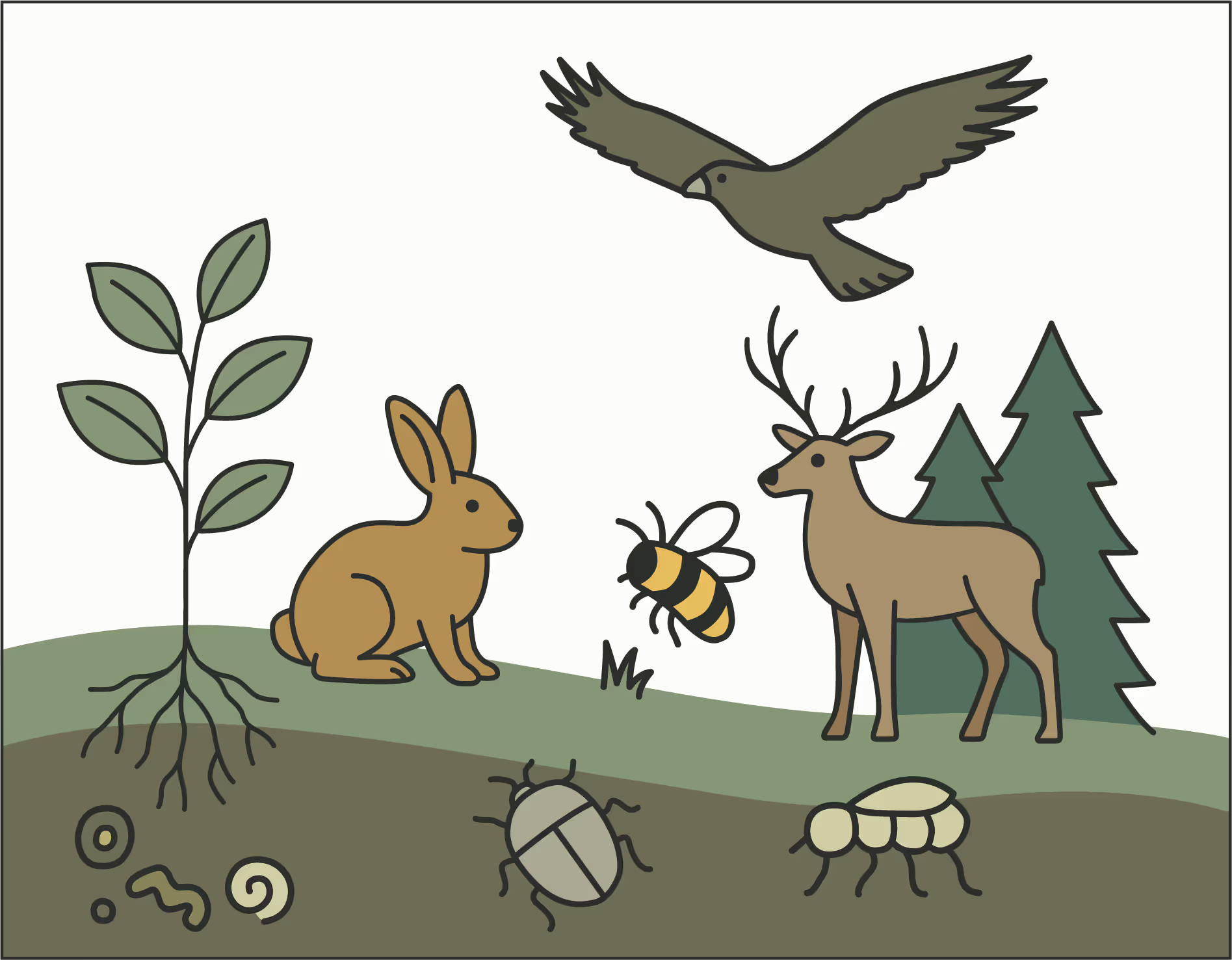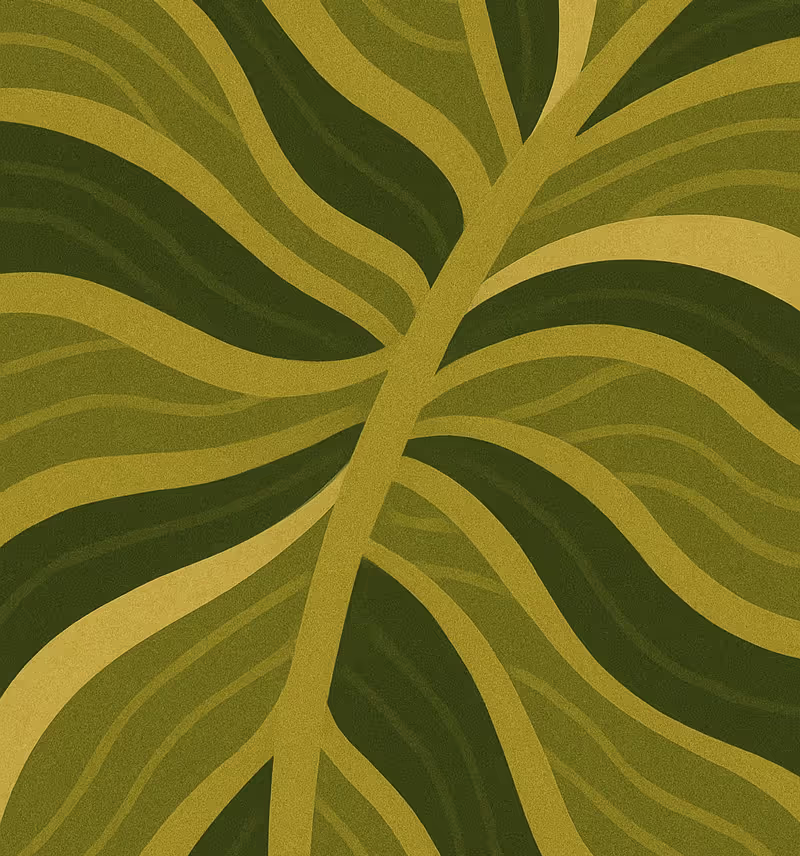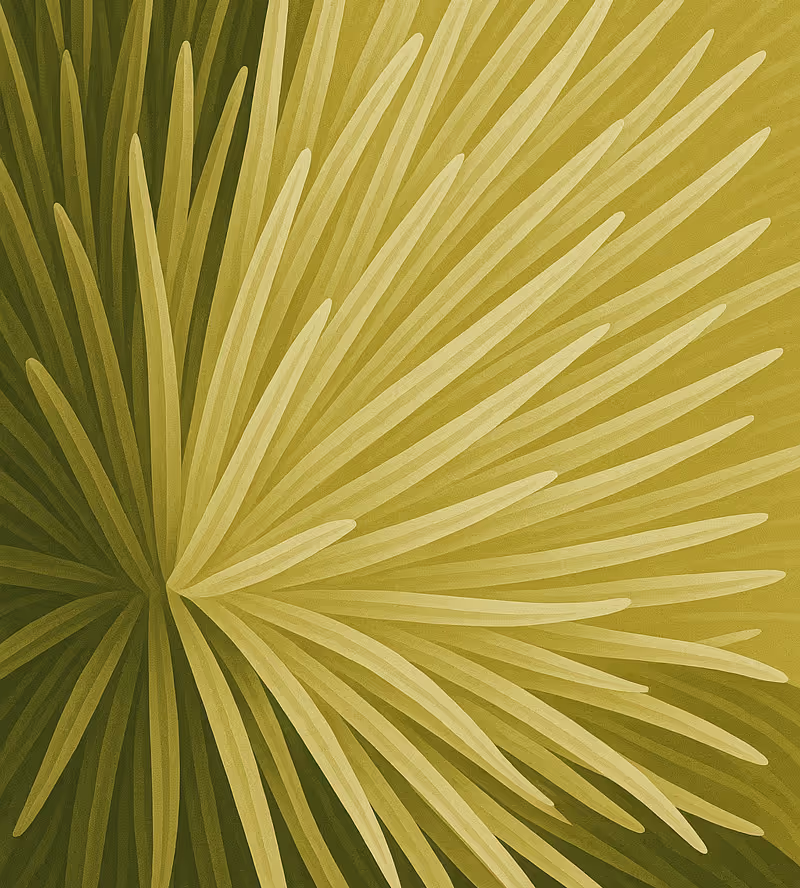Defining Biodiversity
Biodiversity is a contraction of biological diversity. The term is usually attributed to Walter Rosen of the National Academy of Sciences, who co-organised the National Forum on Biodiversity in Washington D.C. in 1985. It was later popularised by the biologist E. O. Wilson, who defined biodiversity as the ‘totality of variation’ in life, encompassing genetic diversity within species, the variety of species, and the diversity of ecosystems (Wilson, 2000).
The Convention on Biological Diversity gives a widely used definition, describing biodiversity as ‘the variability among living organisms from all sources including, inter alia, terrestrial, marine and other aquatic ecosystems and the ecological complexes of which they are part; this includes diversity within species, between species and of ecosystems’. The Convention clarifies that an ‘ecosystem’ is a dynamic complex of plant, animal and micro-organism communities and their non-living environment interacting as a functional unit.
Underpinning these definitions of biodiversity is a central concept: scale. At one level, biodiversity can refer to species richness, the number of species in a given area. This can range from a microscopic scale, such as the number of fungal species in a spoonful of soil, to the diversity of plants and animals in a forest, the range of species in the world’s oceans, or even the total species across the biosphere, a figure that may never be fully known.

When we look at populations rather than whole species, the focus shifts to genetic or functional diversity. Genetic diversity refers to variation within the gene pool, while functional diversity concerns the different roles organisms play within ecosystems. At larger scales, biodiversity can also refer to the variety of communities within a habitat or the range of habitats within an ecosystem. The term is often used without reference to scale, which can obscure its meaning.

In this course, the biological species concept will be used as the standard unit of biodiversity, as proposed by Wilson in The Diversity of Life (2000). A species is defined as a group of organisms that can interbreed and produce fertile offspring under natural conditions, forming a distinct unit of biodiversity.
Quantifying biodiversity
Unlike many areas of science, there is no single metric that can describe biodiversity. Instead, it is measured in different ways depending on the scale and focus of study. Three common approaches are outlined below.
Species-based measures
- Species richness: The total number of species in a given area.
- Species evenness: the relative abundance of species within that area
- Species diversity indices: mathematical models that combine richness and evenness, such as the Shannon or Simpson indices. A range of indices exist, and the Wikipedia entry on diversity indices provides a useful overview
Genetic diversity
- Allelic diversity: the number of different versions of a gene (alleles) in a population, which indicates how much variation exists within a species
- Heterozygosity: the proportion of individuals carrying two different versions of a gene, one from each parent
- Molecular markers: identifiable sections of DNA used to study genetic differences, showing relationships between individuals or levels of variation within populations
Ecosystem diversity
- Habitat diversity: the variety of ecosystems within a region
- Landscape diversity: variation in geography and environmental conditions across larger areas
- Ecosystem functioning: assessment of processes such as nutrient cycling or energy flow
Functional Diversity
Functional diversity is the variety of traits organisms have that affect how they live and interact with their surroundings. These traits can be:
- Morphological: the shape or structure of an organism, such as leaf size, root depth, or beak shape
- Physiological: how an organism functions, such as nitrogen fixation in legumes, drought tolerance in grasses, or salt tolerance in mangroves
- Behavioural: how an organism acts, such as pollination strategy in bees, foraging methods in birds, or migration patterns in fish
Functional diversity is less about how many species are present and more about what they do. For example, a grassland with many different grasses may have high species richness, but if they all perform a similar role, its functional diversity is low. In contrast, a wetland with fish, amphibians, aquatic plants, and pollinating insects has higher functional diversity because of the many roles being played.
High functional diversity supports important processes such as productivity (e.g. fast-growing plants capturing sunlight), nutrient cycling (e.g. fungi breaking down organic matter), and energy flow (e.g. predators controlling herbivore numbers). Communities with many functional traits are also more resilient. If drought hits, some plants may die back while others survive. If one pollinator declines, others can take over. This overlap is called functional redundancy and acts like an insurance policy.
Functional diversity also supports services that benefit people. Pollinators help crops set fruit, natural predators keep pests in check, peatlands and forests store carbon, and wetlands filter water. When functional diversity declines, these services often become less reliable, even if the number of species looks unchanged. For instance, if a forest loses its large fruit-eating birds, seeds of big trees may no longer be dispersed, altering the whole ecosystem over time.
Social Biodiversity
A critical part of understanding biodiversity is the concept of social biodiversity, which recognises that biodiversity is shaped through relationships between people, species and places. These relationships are ecological and cultural, but also political, since they reflect histories of inclusion, exclusion and power (United Nations Environment Programme, 1999; Viveiros de Castro, 2013).
Biodiversity is structured by complex interactions between ecological and social processes. Patterns of abundance and loss cannot be separated from histories of land use, knowledge, and human activity. This calls for an understanding of biodiversity that integrates scientific insight with social and cultural perspectives (Levis et al., 2017; Ter Steege et al., 2013).
In this video Juliana Lins and Cristina Inoue introduce social biodiversity and outline the background of the term:1
Indigenous and First Peoples in Brazil, Latin America, and other parts of the world have long critiqued exclusionary conservation models that displaced communities from their lands. Instead, indigenous communities and their allies have been advocating for a conception of biodiversity that is as social and cultural as it is ecological, giving rise to the term social biodiversity. Social biodiversity offered a means to recognised non-exclusionary relationship between people and nature. For example, in Brazil activists, spokespeople and NGOs demonstrated that the Amazon’s diversity was not a natural baseline but the result of centuries of cultivation, management, and care. Since the 1990’s the significance of these social and cultural dimensions within biodiversity has been recognised in international assessments, Intergovernmental Science-Policy Platform (IPBES) on Biodiversity and Ecosystem Services Global Assessment (2019), and IPBES Transformative Change Assessment (2024), which emphasise that biodiversity loss cannot be addressed without considering the social, economic, and cultural systems through which people engage with nature.
Social biodiversity recognises that:
- Biodiversity is a social as well as an ecological process
- Ecosystems are shaped by people’s practices, values, and worldviews
- Protecting biodiversity requires protecting the social conditions that sustain it
- Biodiversity should be valued for the relationships it sustains, not the resources it provides
- Ecological and cultural diversity are interdependent
For many Indigenous communities, biodiversity includes both visible and invisible beings, all possessing agency and significance. Forests are not resources but societies of interacting entities.
In such worldviews:
- Human and nature are divides, separate entities
- Knowledge arises through relationship and reciprocity
- Care and restraint are ethical principles, not technical measures
Recognising social biodiversity involves questioning whose knowledge defines life and what kinds of understanding are legitimised in environmental decision-making, particularly when scientific perspectives dismiss Indigenous concepts that include visible and invisible beings within biodiversity (Viveiros de Castro, 2013). Acknowledging these plural ontologies opens new possibilities for coexistence beyond extractive or managerial paradigms (De la Cadena et al., 2017; Viveiros de Castro 1998).
Social biodiversity therefore offers a way to imagine coexistence built on respect, dialogue, and shared responsibility in a more-than-human world. It invites attention to the diverse practices of knowing and caring for life that already exist across communities and ecosystems, and which are essential to sustaining planetary diversity in both ecological and social terms.
In this video Juliana Lins and Cristina Inoue offer an in-depth discussion of social biodiversity:234
1 At 05:22 - 05:30Juliana Lins refers to "animal game”, this should be "game animals"
2 At 12:01–12:20, Juliana Lins says: “And this dominance we call hyper-dominance. We have more than 10,000 species of trees, but almost 300 species, they are like half of the species in the Amazon.” This should be: “They account for half of all individual trees in the Amazon.”
3 At 16:33 Cristina Inoue refers to PNGATI, this is the National Policy for Territorial and Environmental Management of Indigenous Lands.
4 At 18.41 Juliana Lins says: "So they are, for example, the development management reserves." This should be "Sustainable Development Reserves."










